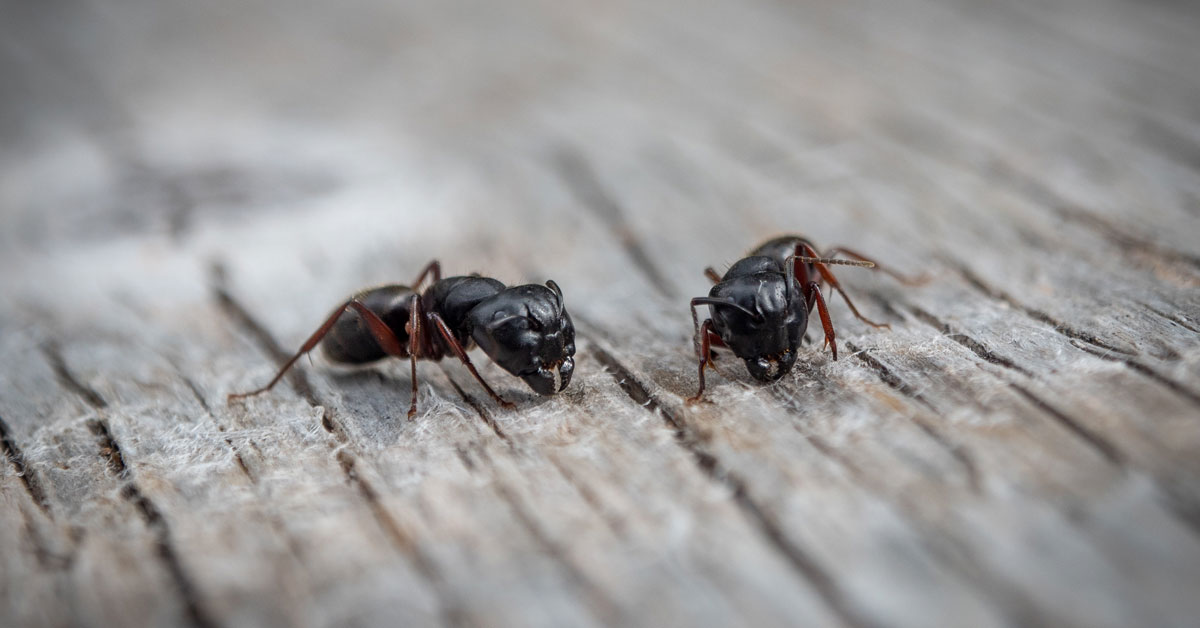How To Get Rid of Carpenter Ants
As the weather continues to warm in the Portland and Vancouver area, the pests and insects that have given us a short reprieve during the winter months start making their way back into our homes. As the summer approaches, these armies of ants and spiders and other pests will already be firmly upon us. Carpenter ants, the most destructive pest in the Pacific Northwest, will have already infested and destroyed areas of some unsuspecting person’s home by summertime. Right now, they are just getting started and waking up from their winter slumber. Their numbers are small but will multiply in the next few weeks. For this reason, “now” is the time to treat for them.
By having a simple preventative pest control treatment done now, you get to avoid problems later on and kill them before they can get established inside your home. A preventative pest control treatment for carpenter ants is not very costly (we offer our treatment for just $88) and also works as a repellent for a whole host of other pests like sugar ants, spiders, and any other crawling insect that comes from outside.
If you do not heed my advice and have preventative pest control treatment done, here are some things that you can look for to know if you have a carpenter ant problem:
First, what does a carpenter ant look like?
Carpenter ants are often misidentified. For some reason, when people see a giant black ant, they think nothing of it because they assume that carpenter ants have wings, and what they see does not. Unfortunately, they are seeing a carpenter ant. Carpenter ants come in many shapes and sizes, and the worker ants (without wings) are seen more often than the reproductive ants (with wings). Any ant that you see that is larger than a sugar ant (also called “soil ant”) is probably a carpenter ant.
Carpenter ants establish their nests inside of a structure by excavating inside of wood and laying their eggs. They do not digest wood like a termite does but spit out the wood shavings, which is why you will often see piles of sawdust under the area of activity. As their nest spreads, it begins to weaken the wood that they are infesting, causing potentially severe damages to your home.
Do you have ants in your house?
First, if you see medium to large size ants trailing around inside of your house, you most likely have a problem. Carpenter ants have no food sources inside of your home. They feed on parts of plants, other insects, etc. and if they do end up inside your home, they are probably just coming from an ant colony located inside your walls that are trying to get outside to forage for food for the colony.
Do you have ants on your house?
If you see ants trailing up your siding, you almost certainly have a problem. Ants follow pheromone trails and each other. Where you see a dozen or so ants, there are many, many more that have followed that same trail. If it ends underneath your siding and into your structure, this would be cause for concern.
Do you see sawdust?
If you see a small pile of sawdust (known as “frass”), you have either carpenter ants or some wood-destroying beetle. Look closely at the frass and see if you can find any insect body parts inside the sawdust. Carpenter ant frass is like their garbage pile where they toss out excavated wood and their dead. If there are not any insect parts, it could be wood-boring beetles, but either way, it is still an issue.
Are you hearing noises at night?
A large enough colony can be heard as they excavate the wood. They work at night and in the early morning hours, and it sounds like a very light scraping noise. Of course, noises are generally pretty tough to distinguish (especially in the middle of the night).
What if you are not seeing any signs of carpenter ants?
Most of our customers tell us that they had no idea that they had carpenter ants until they suddenly found one of the signs above. However, the scary truth is that they had carpenter ants for a long, long time before they found out about it in some cases. Carpenter ants can go undetected for quite a while because they do most of their work at night. By the time you have found them, they may have already caused a lot of damage. So, this brings me back to my original point. Now is the time to treat for carpenter ants!

